
You Can't Do That on Television is a Canadian sketch comedy television series that aired locally in 1979 before airing in the United States in 1981. It featured adolescent and teenage actors performing in a sketch comedy format similar to America's Rowan & Martin's Laugh-In and Canada's Second City Television. Each episode had a specific theme, typically relating to the popular culture of the time.
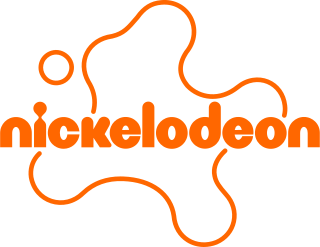
Nickelodeon, occasionally shortened to Nick, is an American pay television channel owned by Paramount Global through Paramount Media Networks’ subdivision, Nickelodeon Group. Launched on April 1, 1979, as the first cable channel for children, the channel is primarily aimed at children and adolescents aged 2 to 17, along with a broader family audience through its program blocks.

Watch Mr. Wizard was an American television program for children that demonstrates the science behind ordinary things. The show's creator and on-air host was Don Herbert. Author Marcel LaFollette says of the program, "It enjoyed consistent praise, awards, and high ratings throughout its history. At its peak, Watch Mr. Wizard drew audiences in the millions, but its impact was far wider. By 1956, it had prompted the establishment of more than five thousand Mr. Wizard science clubs, with an estimated membership greater than one hundred thousand."
Paramount Media Networks is an American mass media division of Paramount Global that oversees the operations of many of its television channels and online brands. Its related international division is Paramount International Networks.
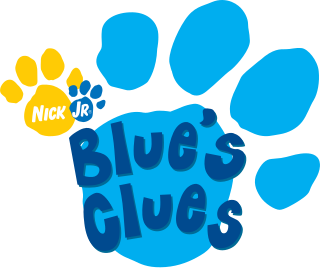
Blue's Clues is an American live-action/animated interactive educational children's television series, created by Angela C. Santomero, Todd Kessler, and Traci Paige Johnson, that premiered on Nickelodeon's Nick Jr. block on September 8, 1996, and concluded its run on August 6, 2006, with a total of six seasons and 143 episodes. The original host of the show was Steve Burns, who left in 2002 and was replaced by Donovan Patton for the rest of the series. The show follows an animated blue-spotted dog named Blue as she leaves a trail of clues/paw prints for the host and the viewers to figure out her plans for the day.
Pinwheel is an American children's television series that was the first show to air on the then-rebranded Nickelodeon, as well as the first to appear on its Nick Jr. block along reruns until 1990. The show was aimed at preschoolers aged 3–5. It was created by Vivian Horner, an educator who spent her earlier career at the Children's Television Workshop, the company behind PBS's Sesame Street. The show was geared to the "short attention span of preschoolers," with each episode divided into short, self-contained segments including songs, skits, and animations from all over the world.
In Demand is an American cable television service which provides video on demand services, including pay-per-view. Comcast, Cox Communications, and Charter Communications jointly own In Demand.
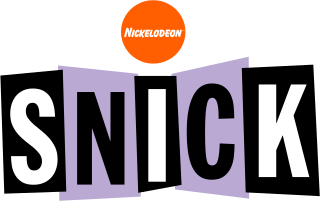
SNICK was a two-hour programming block on the American cable television network Nickelodeon, geared toward older audiences, that ran from August 15, 1992, until January 29, 2005. It was aired on Saturdays starting at 8 p.m and ending at 10 p.m. ET, with a replay on Sundays from 5 p.m. to 7 p.m. In 2005, SNICK was revamped as the Saturday night edition of TEENick. Nickelodeon continues to run a Saturday night programming block today, though since the TEENick name was removed from the lineup in February 2009, the block no longer goes by any name.

Nick Rocks: Video to Go, usually shortened to Nick Rocks, was a music video television series that aired on American cable channel Nickelodeon from 1984 to 1989. It featured pop and rock music videos over a 30-minute timeframe, presented in a countdown format. The show was typically hosted by a man identified on-air as "Joe from Chicago". Most episodes feature Joe traveling to various locations to hear viewers request specific music videos. Several guest hosts were featured over the program's run, such as The Monkees and They Might Be Giants.
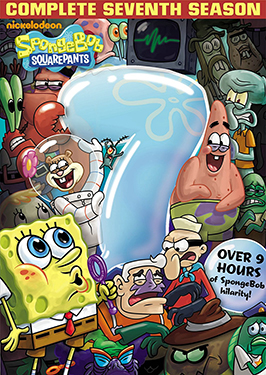
The seventh season of the American animated television series SpongeBob SquarePants, created by marine biologist and animator Stephen Hillenburg, began airing on Nickelodeon in the United States on July 19, 2009, and ended on June 11, 2011. It contained 26 half-hour episodes, with a miniseries titled Legends of Bikini Bottom. The series chronicles the exploits and adventures of the title character and his various friends in the fictional underwater city of Bikini Bottom.

QUBE was a former experimental two-way, multi-programmed cable television system that played a significant role in the history of American interactive television. It was launched in Columbus, Ohio, on 1 December 1977. Highly publicized as a revolutionary advancement, the QUBE experiment introduced viewers to several concepts that became central to the future development of TV technology: pay-per-view programs, special-interest cable television networks, and interactive services. It went defunct in 1984.

Kids Are People Too is an American television series that ran on Sunday mornings from 1978 to 1982 on ABC. The series was a variety/news magazine show oriented towards kids with the intention of recognizing them as people. During its four-year run, the series was nominated for five Emmy Awards and won the 1978 Emmy Award for Outstanding Children's Entertainment Series. The series included celebrity interviews, cartoons, music, and other information that appealed to children.

Nickelodeon is an American basic cable and satellite television network that is part of the Nickelodeon Group, a unit of the Paramount Media Networks division of Paramount Global, which focuses on programs for children and teenagers.

You Gotta See This is an American reality television series produced by Comcast Entertainment Group for Nickelodeon. The series premiered on July 21, 2012. It was hosted by Noah Crawford and Chris O'Neal.

Nickel Flicks is an American television series that premiered on Nickelodeon in 1979 as one of the network's inaugural programs, and the first original series created for the channel after its launch. It showcased "cliffhanger" serials from the 1920s–40s, in addition to early comic one-reelers and silent short films. It was hosted by producer John Moschitta, who later became famous as the "World's Fastest Talker" in commercials for FedEx. This was Moschitta's first on-camera television role. Nickel Flicks was notably the first Nickelodeon show to be cancelled and the shortest-lived out of Nickelodeon's inaugural series; according to Moschitta, it was cancelled due to complaints about the violent nature of many of the serials.

First Row Features is an American anthology series that premiered on the television network Nickelodeon in February 1980 and continued to air until January 1982. It mainly carried British television films for children and family audiences, most of which were filmed in the 1950s–60s. It featured a claymation title sequence created in-house at Nickelodeon's temporary headquarters in Buffalo, New York. First Row Features was a predecessor to the similarly formatted Special Delivery, which debuted later in the same year and eventually replaced it.
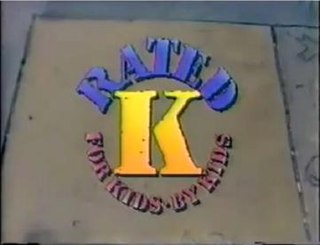
Rated K: For Kids by Kids is an American movie review television program that ran on the cable network Nickelodeon from 1986–1988.
Ronald D. Giles is an American television executive and author.














